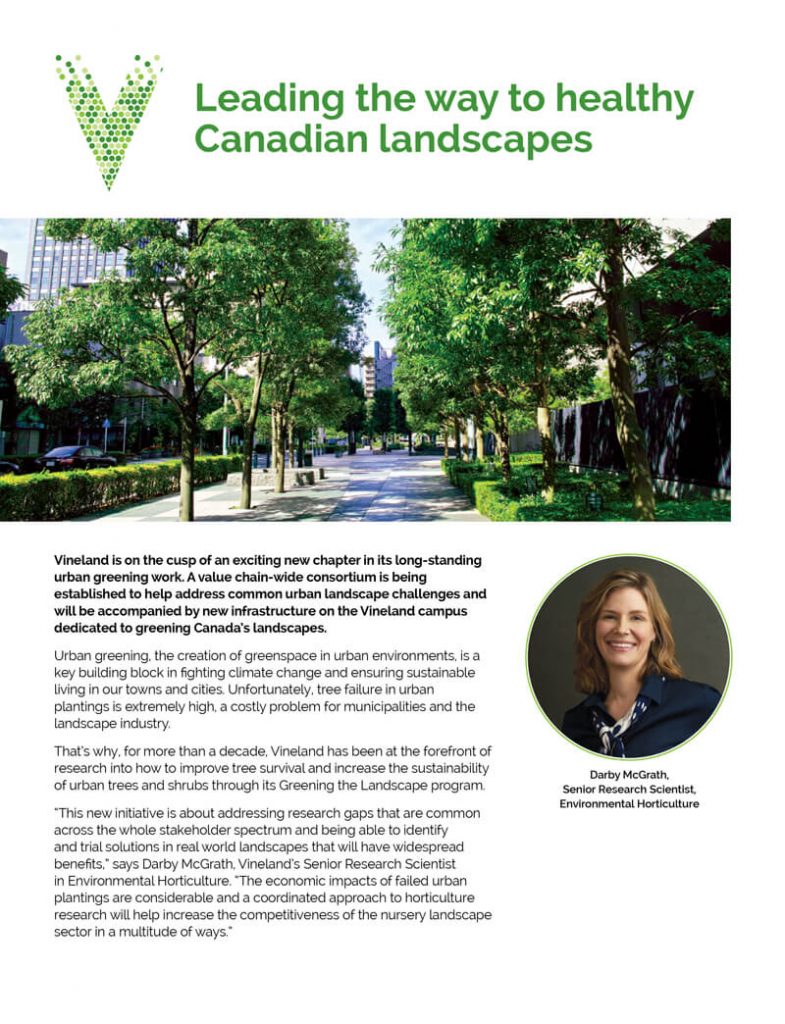Staying ahead of the curve: Today’s Research, Tomorrow’s Successes
Staying competitive in today’s complex business environment requires continual improvements to your horticultural business at all levels of management and production. The cooperatively funded COHA science cluster research programs are an important first step to finding solutions to industry-identified research priorities, but research is only truly successful when project findings are successfully communicated and transferred to the industry.
Beginning this winter, COHA’s research team will bridge the knowledge gap through a series of webinars of specific interest to the ornamental sector. These webinars are designed to bring you practical information to help you make informed decisions on how research results can be applied to your business.
January 11, 2021
11:20 a.m. – 12:20 p.m. (EST)
Is Turfgrass Fertilization Threatening Our Water Bodies?
Guillaume Grégoire, Ph.D., Université Laval
Co-hosted by Landscape Ontario IPM Symposium and Canadian Ornamental Horticulture Alliance (COHA)
Turfgrass plays an important role in urban and residential landscapes, providing functional, recreational and aesthetic benefits. However, in the last few years, there has been increasing concerns about the potential negative impacts of intensive turfgrass management on the environment, specifically on water quality. Although turfgrass increases soil water infiltration and contaminants retention, the application of fertilizers on turf can lead to nutrient losses through volatilization, runoff and leaching. This session will present results from two different research projects conducted by our team in the last few years, during which we monitored nutrient losses in leachate and runoff following different fertilization strategies applied to turfgrass.
Your registration fee of $50 also provides you with access to the complete IPM Symposium line-up.
Click here to register
January 26, 2021
10:00 a.m. (PST) / 1:00 p.m. (EST)
Surface Water Quality Management in Ornamental Horticulture
Dr. Jeanine West, Phytoserv
Dealing appropriately with water issues is arguably one of the most important concerns facing today’s horticultural sector. There are numerous regulations at municipal, provincial and federal levels that govern access to water as well as the implications associated with leachates of run-off water. Growers have responded by constructing elaborate pond and water recycling systems but are now challenged to maintain the quality of water in their pond systems required to keep their modern irrigation systems operable. In this webinar Dr. Jeanine West will share water quality management strategies based on her expertise and preliminary research findings. Time will be allocated for Q&A.
To view the Power Point presentation, click here.
Webinar Recording now available:
March 2, 2021
10:00 a.m. (PST) / 1:00 p.m. (EST)
Changing production practices for better pest control in greenhouse ornamentals
Dr. Rose Buitenhuis, Vineland Research and Innovation Centre
Control of greenhouse floriculture pests uses a systems approach, combining biological control and plant resistance with the manipulation of environmental and crop production practices. Studies suggest that high fertilizer levels stimulate pest reproduction by providing them with more organic nitrogen, present in plant tissues. Based on the results of our most recent research, this webinar will explore improved production practices in potted chrysanthemum and gerbera crops to see if plant nutrition can be optimized as part of an integrated pest management strategy in these crops.
Click here to register

 Français
Français

















 Communication Materials on the Latest Research
Communication Materials on the Latest Research